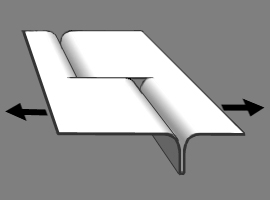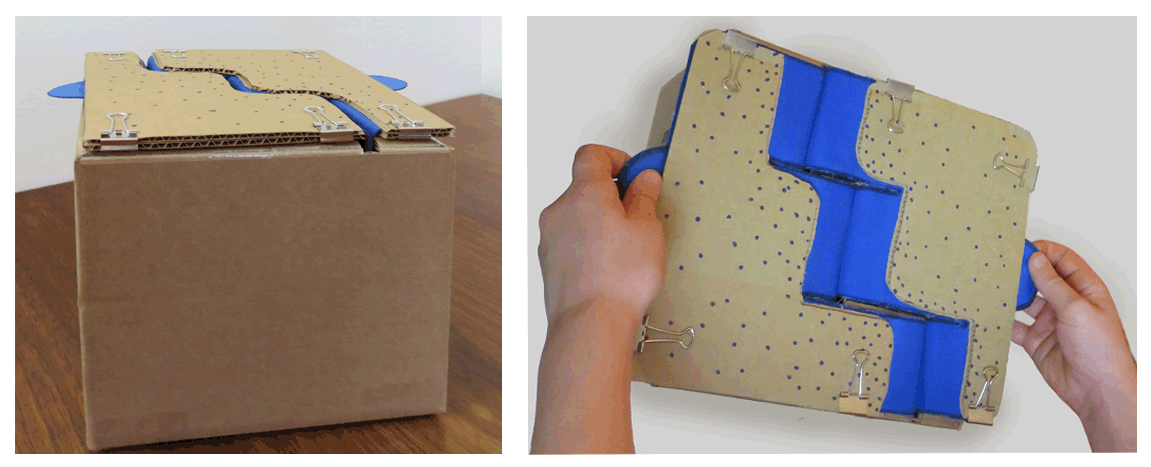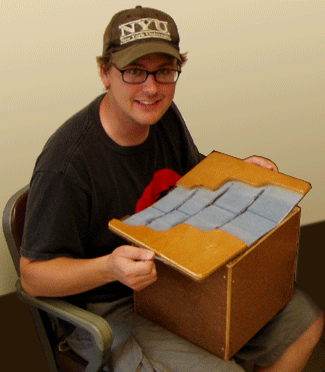
These are physical models that have been made over the years in order to demonstrate the workings of mid-ocean ridge transform faults. The first paper model, below, was handed out to us by J.Tuzo Wilson at my very first scientific meeting. (For a description of that event and of the power of transform faults, click here.)

Download: Tuzo Wilson's transform fault demonstration diagram, as I remember it.
Another, more elaborate model, made of cloth and cardboard, is much easier to manipulate. It takes some work, but is worth building as a demonstration model for classes or labs. It is a cardboard box with an open bottom and slots cut into the top. Rifting continents are then pulled apart, pulling cloth strips out of the slots. The new, cloth "sea floor" that emerges will have the active spreading centers offset by active transform faults. Its fracture zones (inactive) will grow in length as the sea floor spreads.
The cloth strips are weighted so that they don't pull all the way out and so that,
after use, they pull the strips back into the box to reset the geometry.

Download: construction instructions for cardboard and cloth sea floor spreading demonstration model.
The first version that I made of this cardboard box model held up for several
years before it caved in from the weights. Chuck Anderson then designed and built
a wooden box version of the model, shown below. Chuck's wooden box version has
held up through more than a decade of hard use, though the cloth strips are
beginning to fray. Click the Download link below and you will
get a description of the construction of that box.

Download: Wood and cloth sea floor spreading demonstration model.
Comments on this and all of the materials offered on this site are welcomed:
atwater@geol.ucsb.edu